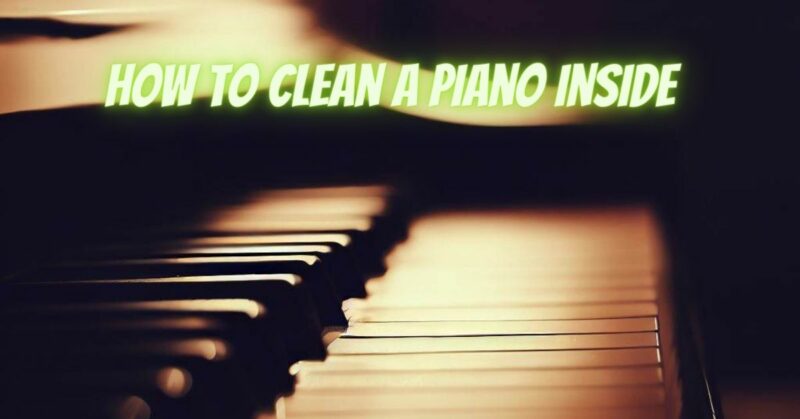Cleaning the inside of a piano is an essential part of its maintenance routine, as it helps remove dust, debris, and accumulated dirt that can affect the instrument’s sound and functionality. While cleaning the inside of a piano requires extra care and caution, it is a task that can be undertaken with proper knowledge and technique. In this article, we will explore step-by-step instructions on how to effectively clean the inside of a piano without causing any damage.
Note: Cleaning the inside of a piano can be a delicate task, and it is recommended to consult a professional piano technician for more thorough and intricate cleaning procedures.
- Gather the Necessary Tools:
Before starting the cleaning process, gather the following tools:
- Soft, lint-free cloths or dusters
- Small, soft brushes (such as artist brushes or paintbrushes)
- Vacuum cleaner with a brush attachment
- A small container of compressed air (optional)
- Isopropyl alcohol (for stubborn stains or marks) – use sparingly and avoid contact with any other parts of the piano.
- Prepare the Piano:
a. Ensure the piano lid is fully open and securely propped up to provide easy access to the internal components.
b. Make sure the piano is turned off and unplugged from the power source to avoid any electrical accidents.
- Dusting the Soundboard and Strings:
a. Use a soft, lint-free cloth or duster to gently remove dust from the soundboard and strings. Start from the treble side and work your way down to the bass side.
b. Be careful not to apply excessive pressure or touch the strings directly, as it can cause damage or alter their tension.
c. For hard-to-reach areas between the strings, use a small brush or a vacuum cleaner with a brush attachment on a low suction setting.
- Cleaning the Keys:
a. Use a soft, lint-free cloth or duster to wipe the tops of the piano keys. Start from one end and work your way to the other, ensuring each key is thoroughly cleaned.
b. For stubborn stains or marks on the keys, lightly dampen a cloth with isopropyl alcohol and gently wipe the affected area. Avoid excessive moisture that could seep into the keys.
c. Dry the keys immediately after cleaning to prevent any moisture damage.
- Removing Dust from the Action:
a. Take extra caution when cleaning the piano action, as it contains delicate mechanisms. If you’re unsure or uncomfortable, it’s best to leave this task to a professional technician.
b. Use a small, soft brush or compressed air (on a low setting) to remove dust and debris from the action. Focus on the hammer felts, dampers, and other moving parts. Avoid applying excessive force or dislodging any components.
- Finishing Touches:
a. After cleaning, inspect the inside of the piano for any residual dust or debris. Use a vacuum cleaner with a brush attachment or a soft brush to remove any remaining particles.
b. Ensure all the components are dry and free of moisture before closing the piano lid.
Conclusion:
Cleaning the inside of a piano requires care, patience, and attention to detail. By following the proper techniques and using the recommended tools, you can effectively remove dust and dirt from the soundboard, strings, keys, and action. Remember, if you encounter any complex or intricate cleaning requirements, it is best to consult a professional piano technician who can provide expert guidance and assistance. With regular cleaning, your piano will maintain its beauty, sound quality, and performance for years to come.


